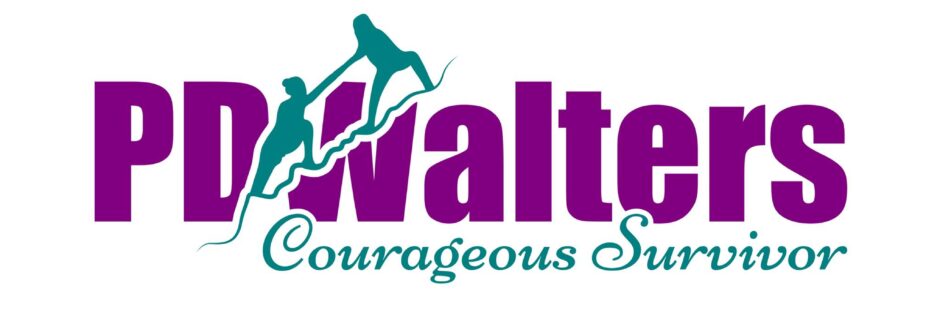For much of my life, I didn’t understand the impact of triggers or how they controlled my thoughts, emotions, and actions. Without that understanding, I often hurt myself—physically and emotionally—and at times, my reactions hurt the people around me. It wasn’t until I began recognizing and addressing my triggers that I could start to reclaim my life and heal the parts of me that trauma had gripped for so long.
What Are Triggers?
Triggers are responses to stimuli that remind us of past trauma. They can be external, like a sound, smell, or place, or internal, like a thought or emotion. For me, triggers caused physical reactions such as a racing heart, fainting, or breaking out in hives. Emotionally, they led to intense feelings of fear, anger, or sadness that sometimes seemed to come out of nowhere. These responses occur because the brain perceives the trigger as a threat, even if the danger is no longer present.
I didn’t always recognize these reactions as triggers. Without that knowledge, I often felt ashamed or confused by my behavior. It felt like I was broken, which only deepened the wounds.
How Triggers Manifest in Children
Reflecting on my own childhood, I now recognize that many of my behaviors were tied to unprocessed trauma and triggers. Children often lack the vocabulary to explain what they’re feeling. Behavioral changes, outbursts, physical complaints, and avoidance are common signs of triggers in children. A child might say, “I feel sick,” or “I’m scared, but I don’t know why,” as they navigate overwhelming feelings they can’t fully process.
they can’t fully process.
For me, those moments often led to behaviors that were labeled as “bad” rather than seen as cries for help. Recognizing and addressing triggers in children can make all the difference in helping them feel safe and supported, breaking cycles of pain before they deepen.
Addressing Triggers as Adults
As an adult, I’ve learned that identifying and addressing triggers is essential for healing. Ignoring them only made my reactions stronger and more harmful. These are some strategies that have helped me manage my responses:
- Journaling: Writing about what triggered me and how I reacted helped me identify patterns and make sense of my emotions.
- Breathwork: Deep breathing calms the nervous system and anchors me in the present moment when I feel overwhelmed.
- Right- and Left-Brain Engagement: Techniques like bilateral movements or tapping have been invaluable in helping me process the emotions tied to my triggers and rewire my responses.
Rewiring Triggers
Healing doesn’t mean avoiding triggers; it means reducing their emotional charge. This doesn’t happen overnight, but consistent efforts can retrain the brain. Techniques like visualization, positive pairing (associating a trigger with something comforting), and gradual exposure in safe environments have helped me desensitize my brain and create healthier patterns.
 Over time, I’ve seen how addressing my triggers has not only improved my relationship with myself but also with others. My reactions no longer feel like uncontrollable storms, and I’ve regained trust in my ability to navigate life’s challenges.
Over time, I’ve seen how addressing my triggers has not only improved my relationship with myself but also with others. My reactions no longer feel like uncontrollable storms, and I’ve regained trust in my ability to navigate life’s challenges.
Supporting Others Who Are Triggered
If you’re supporting someone who’s triggered, your response can make a significant difference. From my experience, these approaches have been most helpful:
- Stay Calm: Your energy can help ground someone who is triggered.
- Validate Their Feelings: Let them know their emotions are valid and they’re not alone.
- Offer Gentle Support: Asking, “What do you need right now?” or suggesting grounding techniques like deep breathing can help.
- Be Patient: Triggers take time to settle, and their reaction is not about you.
Why This Matters
For years, not understanding my triggers left me trapped in cycles of shame, guilt, and pain. I hurt myself in ways I didn’t fully comprehend, and my reactions sometimes hurt others I cared about. Addressing triggers has been a lifeline—a way to break those cycles and begin to heal.
When left unaddressed, triggers can lead to chronic stress, strained relationships, and even physical health issues. Healing isn’t about avoiding discomfort—it’s about working through it. By facing triggers head-on, we take back control and heal the parts of ourselves that trauma once held captive.
Looking Ahead
As we move forward, I encourage you to make time for self-care, especially during challenging seasons like the holidays. Whether it’s journaling, meditating, or simply taking a quiet moment for yourself, prioritize your well-being. For those navigating heavy or toxic environments, self-care becomes even more critical. You deserve peace and healing, no matter the season.
Triggers can be challenging, but with the right tools and support, healing is possible. Take it one step at a time, and remember: you’re not alone on this journey.
